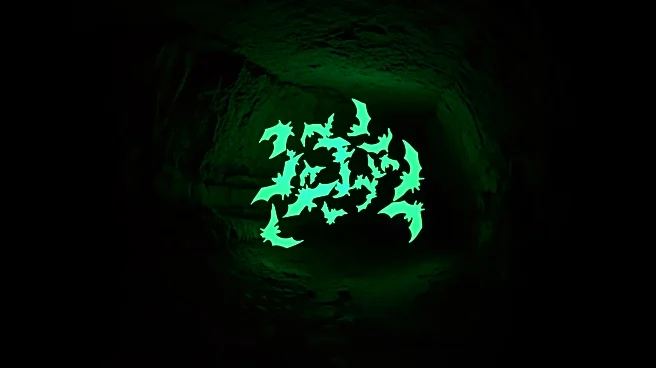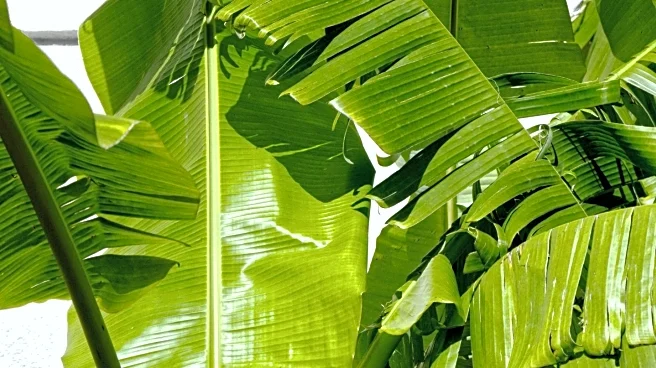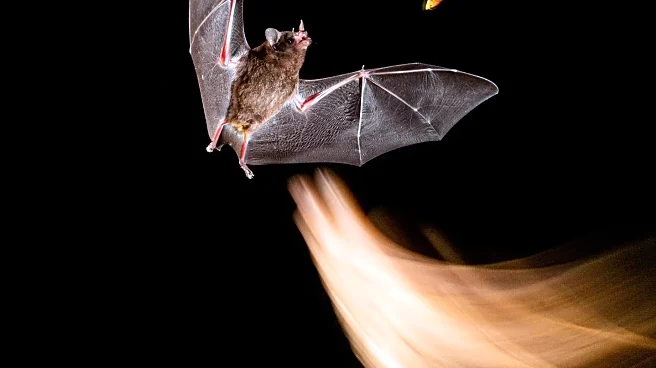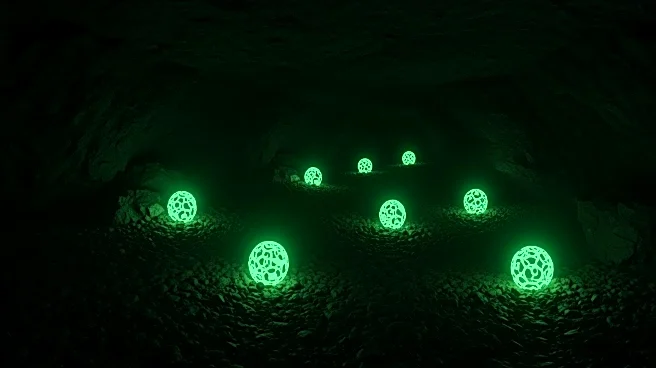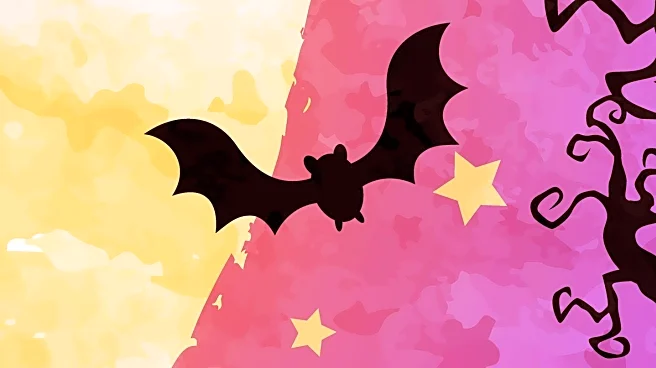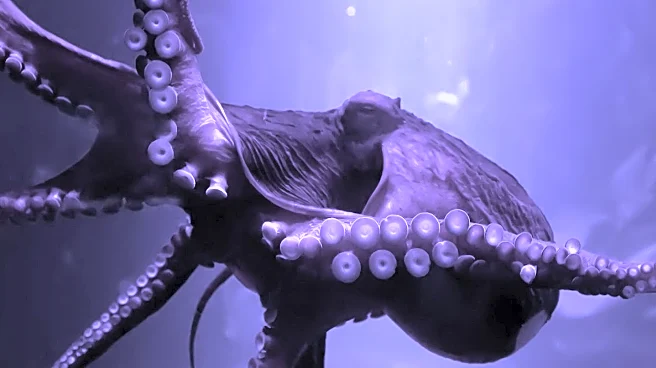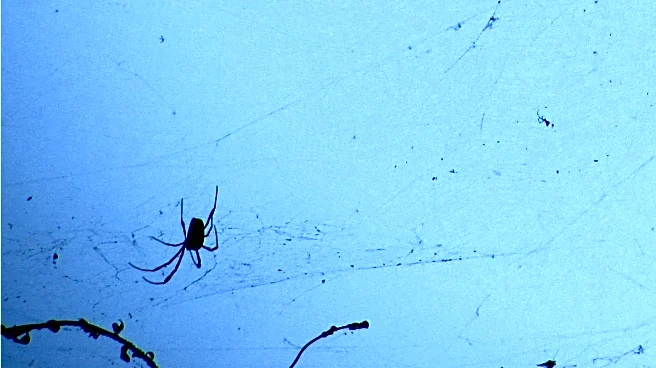What's Happening?
Researchers at the University of Georgia have discovered that certain North American bat species emit a ghostly green glow when exposed to ultraviolet light. The study examined 60 museum specimens from six bat species, including big brown bats and Brazilian
free-tailed bats, and found consistent photoluminescence across all species, sexes, and ages. The glow originates from the bats' wings, hind limbs, and the membrane between their legs. The phenomenon is believed to be inherited from a common ancestor, though its current function, if any, remains unclear.
Why It's Important?
This discovery adds to the understanding of bat biology and the evolutionary traits of mammals. The consistent photoluminescence across different species suggests a shared evolutionary history, which could provide insights into the ecological and behavioral adaptations of bats. Understanding such traits can aid in conservation efforts and enhance knowledge of biodiversity. The study also raises questions about the potential functions of photoluminescence in bats, which could lead to further research into their behavior and ecology.
What's Next?
Future research will focus on examining live bats to determine if the photoluminescence has any behavioral function, particularly in their natural environments. This could involve studying how the glow affects bat interactions, foraging, and predator avoidance. The findings may also prompt investigations into other species with similar traits, contributing to a broader understanding of photoluminescence in the animal kingdom.
